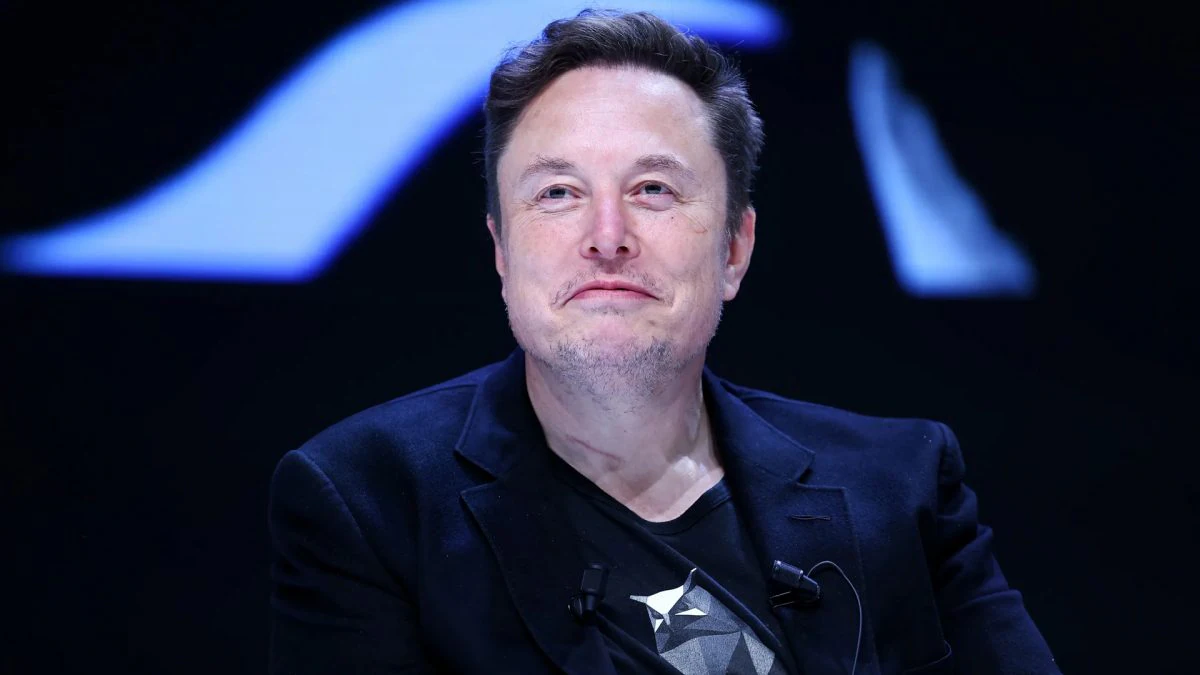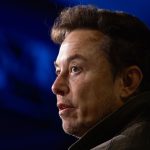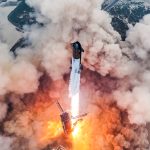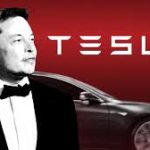Elon Musk teases new SpaceX mission to reach the moon and rival China by 2026!

Elon Musk Teases New SpaceX Mission to Reach the Moon and Rival China by 2026!
1. SpaceX’s Bold Vision for the Moon: A New Era of Exploration
Elon Musk, the visionary behind SpaceX, has once again set the space exploration community buzzing with excitement. In a recent tweet, Musk teased the company’s ambitious new mission to the Moon, aiming for a launch by 2026. The mission not only promises to advance humanity’s understanding of space, but it also places SpaceX in direct competition with China, whose space program has made impressive strides in recent years.
This new project is part of SpaceX’s broader goal of re-establishing the U.S. as a dominant force in space exploration, and Musk’s tweet was a clear signal of intent: SpaceX is not only looking to expand humanity’s presence on the Moon, but to do so with cutting-edge technology and a bold vision. The teaser was cryptic, but it hinted at the use of SpaceX’s most advanced rockets, including the Starship, which Musk has described as the key to reaching Mars and beyond.
The United States, through NASA, has historically been the leader in space exploration, particularly with the Apollo missions that first landed astronauts on the Moon in 1969. However, SpaceX’s involvement in lunar exploration will be more than just a return to the Moon—it could mark the beginning of a new chapter in space exploration where private companies like SpaceX play a leading role.
Musk’s remarks about SpaceX’s upcoming mission have been met with mixed reactions. Space enthusiasts are excited about the potential for a private company to help push the boundaries of human exploration. However, some skeptics question whether SpaceX can meet the ambitious timeline Musk has set for 2026, given the complex nature of space travel and the many obstacles that remain in lunar exploration.
2. The Competition Heats Up: China’s Lunar Program
Musk’s announcement comes at a time when China’s space program has been making waves globally. China’s rapid advancements in space exploration have positioned it as a formidable player in the race for lunar dominance. In recent years, China has successfully launched multiple missions to the Moon, including the Chang’e-4 mission, which made history as the first spacecraft to land on the far side of the Moon. Additionally, China has laid out ambitious plans for future lunar exploration, including its goal to land astronauts on the Moon by the 2030s.
China’s growing presence in space has raised concerns in the U.S., with some seeing China’s achievements as a challenge to American supremacy in space exploration. The U.S. has responded with renewed efforts through NASA, and now, with SpaceX’s ambitious Moon mission, the U.S. is setting its sights on regaining its leadership position.
Musk’s new mission is not just a matter of scientific curiosity; it is a geopolitical statement. By targeting 2026 for a lunar mission, SpaceX aims to stay ahead of China’s lunar ambitions and potentially gain a competitive edge in the race to establish a permanent human presence on the Moon. This aligns with Musk’s broader goal of making humanity a multiplanetary species, with the Moon serving as a stepping stone toward more distant targets, like Mars.
In order to beat China to the Moon, SpaceX will need to overcome several hurdles. While the company has made impressive strides with its Falcon 9 rockets and the development of the Starship vehicle, the challenge of landing on the Moon is far more complex. It will require not only the technical prowess to navigate the harsh lunar environment, but also the political and economic will to secure funding and international cooperation.
Despite these challenges, Musk’s confidence in SpaceX’s capabilities remains unwavering. The company’s success with reusable rockets has revolutionized space travel, and many believe that SpaceX’s innovative approach could be the key to achieving its ambitious goals for lunar exploration.
3. The Technology Behind SpaceX’s Lunar Mission
At the heart of SpaceX’s new Moon mission is the Starship rocket, which Musk has described as the most advanced spacecraft ever built. Starship is a fully reusable spacecraft designed for long-duration space travel, capable of carrying large payloads and humans to the Moon, Mars, and beyond. With its massive size, Starship is designed to transport a wide array of cargo, including scientific instruments, satellites, and even entire habitats.
Starship’s development has been closely watched by space enthusiasts and experts alike. Since its first test flights, Starship has demonstrated the potential to revolutionize space exploration. Musk envisions Starship as the vehicle that will eventually make space travel accessible to the general public and enable human colonization of other planets. But before it can take humanity to Mars, Starship must first prove its reliability by reaching the Moon.
In SpaceX’s 2026 mission, Starship will be tasked with delivering a crewed mission to the lunar surface, with the goal of establishing a sustainable human presence on the Moon. This mission will be the first step in what Musk hopes will be a broader effort to use the Moon as a base for further exploration of deep space.
To achieve this, SpaceX will rely on its extensive expertise in rocket reusability and precision landing technology. The Falcon 9 rocket, which has already been used for dozens of successful missions, will likely serve as a launch vehicle for the Starship spacecraft, transporting it into orbit before the spacecraft takes over and heads toward the Moon.
In addition to the hardware, SpaceX will need to overcome the significant logistical challenges of operating on the Moon, such as ensuring a reliable power supply, providing life support systems for astronauts, and managing communication with Earth. SpaceX’s involvement in NASA’s Artemis program, which aims to return humans to the Moon by 2024, will likely provide valuable experience for the upcoming mission.
Musk’s vision for SpaceX’s lunar mission goes beyond just landing on the Moon. He has long spoken about the goal of creating a sustainable human presence on the lunar surface, which could serve as a launchpad for future missions to Mars and other parts of the solar system. To make this vision a reality, SpaceX will need to address numerous technical, logistical, and financial challenges, but the company’s track record of overcoming obstacles gives hope that this dream could soon become a reality.
4. What’s at Stake: The Future of Space Exploration and Geopolitical Rivalries
As SpaceX races against China and other nations to reach the Moon, the stakes are higher than ever. The Moon, once seen as a destination for scientific discovery, is now viewed as a critical geopolitical and economic asset. Establishing a human presence on the Moon would not only have profound scientific implications, but it would also be a powerful symbol of national and corporate ambition. Whoever reaches the Moon first—and who remains there—could set the tone for future space exploration.
For Musk, the Moon is not just a goal in itself; it is a means to a larger end. He has long argued that space exploration is essential for the survival of humanity, citing the potential risks posed by climate change, asteroid impacts, and other existential threats. Musk envisions a future where humans are living on multiple planets, with Mars as the ultimate goal. The Moon, with its proximity to Earth, is seen as a critical step in making this dream a reality.
However, the geopolitical implications of SpaceX’s mission cannot be ignored. The U.S. and China are already in a space race, with both nations seeking to assert their dominance in the final frontier. Musk’s new mission adds another layer of competition, with SpaceX positioning itself as the leader in the commercial space race. If successful, the mission could mark a significant achievement for the private sector, signaling that private companies are not just participants in space exploration, but leaders shaping the future of humanity’s presence in space.
The challenge of reaching the Moon and establishing a lasting presence is not just technological; it is deeply tied to international politics. The Moon is considered a global commons, and spacefaring nations are expected to abide by international treaties governing its use. However, as more nations and private companies venture into space, the question of ownership and territorial claims could become a point of contention.
In conclusion, Musk’s teasing announcement about SpaceX’s upcoming mission to the Moon has set the stage for what promises to be an exciting and competitive period in space exploration. With SpaceX aiming to rival China and return humanity to the lunar surface by 2026, the future of space exploration has never looked more thrilling. Whether or not SpaceX can meet its ambitious timeline remains to be seen, but one thing is certain: the race to the Moon is on, and SpaceX is determined to lead the way.










